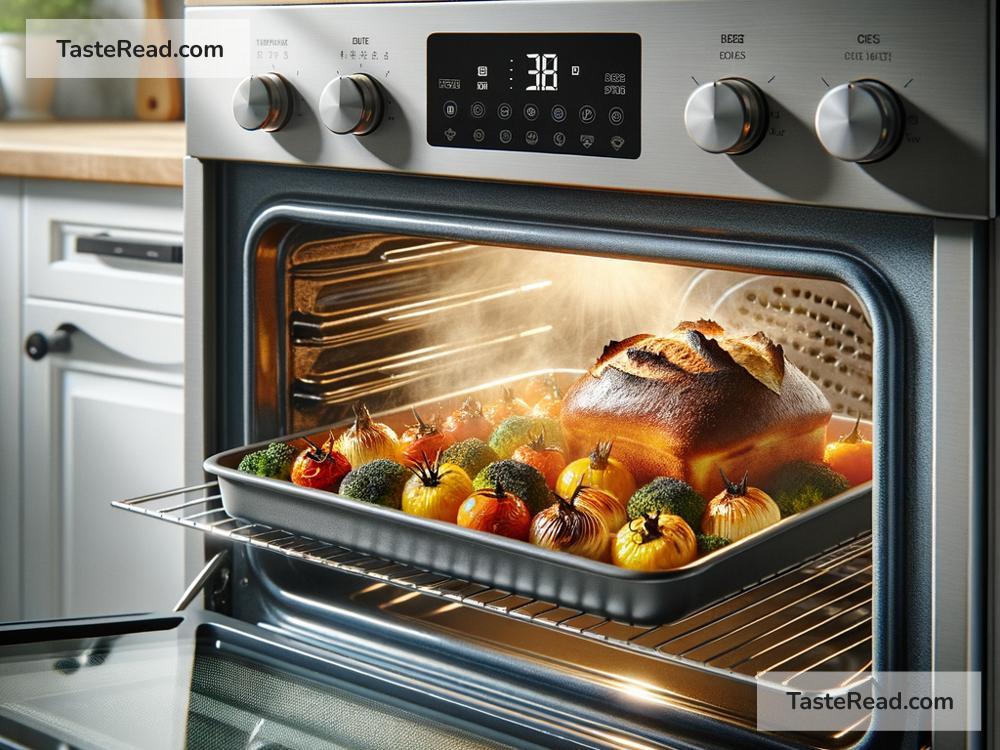The Science of Cooking with Convection: Techniques and Tips
Cooking is both an art and a science. While we all enjoy the delicious flavors of food, sometimes understanding the science behind how it’s made can help us become better cooks. One fascinating method of cooking is using convection. If you’ve ever heard of a convection oven but aren’t exactly sure what it does, don’t worry! In this article, we’ll break down the science behind convection cooking, how it works, and simple techniques and tips to use it effectively.
What Is Convection Cooking?
To understand convection cooking, think about how heat moves. In a traditional oven (also called a conventional oven), heat comes from a source like heating coils at the top or bottom. The hot air stays mostly still, slowly heating your food. In a convection oven, however, things are a bit different.
Convection ovens use a fan and, often, a special exhaust system to circulate hot air around the oven. Instead of heat gently “sitting” near your food, the fan makes the hot air move all around. This even flow of heat cooks food faster and more evenly.
Imagine standing in front of a fan on a hot day. Instead of the air feeling still and muggy, the fan moves the air around, creating a refreshing breeze. The convection oven does the same thing with hot air—it keeps it moving, so the heat reaches every part of your food.
Why Is Convection Cooking Better?
Convection cooking has several benefits over conventional cooking. Here are some of its key advantages:
-
Cooks Faster: Because the hot air is constantly circulating, convection ovens cook food faster than regular ovens. You’ll save time while still achieving great results.
-
Even Cooking: Traditional ovens can create “hot spots.” For example, the food near the heating element might cook faster than food on the other side of the pan. With convection ovens, the heat spreads evenly, so all parts of your dish cook at the same rate.
-
Crispier Results: Convection ovens are great for roasting or baking things like vegetables, meats, or pastry. The circulating air helps remove moisture from the surface of the food, giving foods that perfect crispy exterior.
-
Energy Efficiency: Because convection ovens cook faster, they use less energy compared to a conventional oven running for longer periods.
When Should You Use Convection?
Convection ovens work wonders for certain types of cooking, but they’re not ideal for everything. Here’s when you should (and shouldn’t) use convection:
Best Uses for Convection:
– Roasting Meats and Vegetables: Convection is ideal for roasting because it creates golden, crispy exteriors while locking in moisture inside.
– Baking Cookies and Pastries: You’ll get evenly baked cookies and flaky layers on puff pastries or croissants.
– Toasting and Browning: For dishes like casseroles or gratins, convection helps achieve that perfect golden crust.
When to Avoid Convection:
– Delicate Bakes: Cakes, soufflés, and other delicate baked goods can collapse or dry out if exposed to convection. These dishes thrive in a gentle, even heat.
– Covered Dishes: If your food is completely wrapped (like covered braises or foil-covered lasagnas), convection won’t make a big difference.
Tips for Cooking with a Convection Oven
If you’re new to cooking with convection, don’t worry—it’s easy to learn! Here are some simple tips to get you started:
-
Adjust the Temperature: Most recipes are written for conventional ovens. When using a convection oven, lower the temperature by about 25°F (or 15°C). For example, if a recipe calls for baking at 350°F, set your oven to 325°F instead.
-
Check Early: Since convection ovens cook faster, check your food earlier than usual. If a recipe says to bake for 30 minutes, start checking at 20-25 minutes to avoid overcooking.
-
Use Shallow Pans: Shallow pans allow air to circulate more freely around the food. This creates even cooking and better browning.
-
Don’t Crowd the Oven: For convection cooking to work well, there needs to be space for air to flow. Avoid overloading the oven, especially with big pans or multiple dishes.
-
Avoid Covering Food: Since convection relies on air circulation, covering food with foil or lids can block the airflow. Only cover food if the recipe specifically calls for it.
Common Misunderstandings About Convection
Some people worry that convection ovens are too complicated or that switching from a conventional oven means relearning how to cook. The truth is, convection ovens are simple and user-friendly! With just a few small adjustments (like lowering temperature and checking food early), you’ll enjoy the benefits without hassle.
It’s also worth noting that most modern ovens have both convection and conventional settings. With the flick of a switch, you can toggle between modes as needed, giving you flexibility based on the dish.
Final Thoughts
Cooking with convection is a smart and efficient way to prepare delicious meals. The science behind convection—the moving hot air—creates faster, more even cooking with crispy results. Whether you’re roasting vegetables, baking cookies, or browning casseroles, convection can elevate your dishes in unexpected ways.
By understanding the basics of convection and following simple tips like adjusting temperature and choosing the right pans, you’ll be well on your way to mastering this advanced cooking method. Don’t be afraid to experiment! Once you get the hang of it, convection ovens will become one of your favorite tools in the kitchen. Happy cooking!


